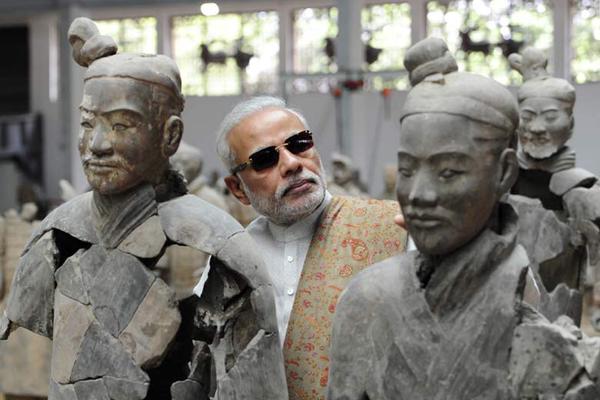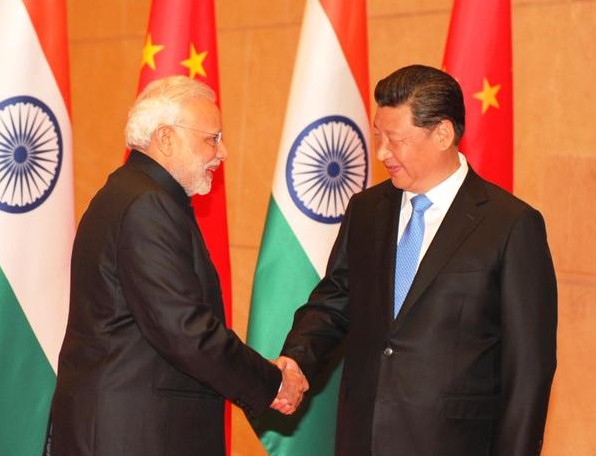![]() India and China have underlined the importance of climate change to their nations by coming up with a separate joint statement during Indian Prime Minister Narendra Modi’s visit to Beijing last week. For China’s President Xi Jinping, this is the second major announcement on climate change, following the joint statement during US President Barack Obama’s visit to Beijing last November.
India and China have underlined the importance of climate change to their nations by coming up with a separate joint statement during Indian Prime Minister Narendra Modi’s visit to Beijing last week. For China’s President Xi Jinping, this is the second major announcement on climate change, following the joint statement during US President Barack Obama’s visit to Beijing last November.
The joint statement by China and India – currently the world’s largest and third largest greenhouse gas (GHG) polluters respectively – assumes significance because it indicates what will persuade these emerging economies to take on significant GHG emission control measures after 2020.
At the end of Modi’s trip to China, Mongolia and South Korea, a senior official who had helped draft the joint statement told thethirdpole.net, “We have made it as clear as we can in diplomatic language – if developed countries want us to take strong measures after 2020 under the Paris treaty, they will have to start putting their money where their mouths are.”
“Developed country governments will have to significantly raise their contributions to the Green Climate Fund right now and all the way to 2020, by which time they should be paying US$100 billion a year, as they had promised way back in 2009.” The official was speaking on the condition of anonymity.
While this message is clear, the language of the May 15 joint statement is more conciliatory than used by Indian and Chinese delegates during past sessions of the United Nations Framework Convention on Climate Change (UNFCCC), when they have repeatedly pointed out that most of the extra GHG in the atmosphere – which is causing climate change – has been put there by developed nations since the start of the Industrial Age.

Instead of referring to that once more, the joint statement says climate change “needs to be addressed through international cooperation in the context of sustainable development.” It also refers to the 2010 memorandum of understanding between the two governments on cooperation on green technologies and promises to further cooperation in this area.
This is followed by the more traditional hard-line approach. While expressing full support to the success of the Paris conference scheduled later this year, the two governments have reaffirmed “that the 2015 agreement shall be in full accordance with the principles, provisions and structure of the UNFCCC, in particular the principles of equity and common but differentiated responsibilities and respective capabilities, reflecting different historical responsibilities, development stages and national circumstances between developed and developing countries.”
As the official pointed out, the meat of the joint statement comes after this, where it says that India and China “urged the developed countries to raise their pre-2020 emission reduction targets and honour their commitment to provide US$100 billion per year by 2020 to developing countries.”
Domestic action
The joint statement adds, “As the two biggest developing countries, China and India are undertaking ambitious actions domestically on combating climate change through plans, policies and measures on mitigation and adaptation despite the enormous scale of their challenges in terms of social and economic development and poverty eradication.”
During Obama’s visit last November, in a joint statement China said it intended to peak its GHG emissions by 2030.
The current roadmap towards the Paris climate treaty is dependent on what individual countries will do on their own to combat climate change.
With reference to that, the May 15 joint statement said, “China and India are fully engaged in their domestic preparations for their respective intended nationally determined contributions (INDCs) in the context of the 2015 agreement and will communicate their INDCs as early as possible and well before the Paris Conference.”
Observers happy
Environmentalists who have been tracking climate negotiations were reasonably happy with the India-China joint statement, since they read in it a willingness by both countries to be flexible in their differentiation between the commitments of developed and developing countries. This has been one of the major sticking points in the negotiations, but observers who are used to reading between the lines said China and India may now be more willing than before to consider taking on progressively higher emission control commitments as their economies improved.
However, the Indian government is unlikely to make any explicit move in this regard before the Paris summit. In a preparatory meeting held in St Petersburg last week, Prakash Javadekar, India’s Minister for Environment, Forests and Climate Change, stuck to the country’s negotiating position of common but differentiated responsibilities. Observers are now watching the next preparatory meeting – scheduled in Bonn in June – in case there are more straws in the wind.

